Rolando “the engineer” has spent over 20 years selling so-called used and rare books. “Every day sales are decreasing, it is getting more difficult to obtain books, people accuse us of buying low and selling high because customers are mainly tourists, but the truth is we have to take a risk at the Plaza de Armas.”
The main market covers about 100 square meters in front of the old Palace of the Captains General (today museum of the city). Dozens of booksellers with their portable bookcases gather here every day, offering valuable printed collections to passers-by, mostly foreigners. Any Cuban would love to buy them, too, but they face severe obstacles: “Who would ever think of paying 10 dollars for a book on the history of Cuba? My son will stick with the one they gave him at school because “bucks” are to buy food and save for new shoes.”

Such an answer does not come from a common man. It was given by a gentleman who demonstrates extensive knowledge and has the desire to buy The History of Cuba by Emeterio Santovenia: an extremely rare text describing important personalities of our past who were systematically erased by the communist historiography.
Our “engineer” returns with details of the unstoppable decline of what was once a thriving business: “On some days I have to borrow money for lunch. I even have to pay for cold water. You cannot move, you never know who will come to buy and that’s the magic moment. If you sell one book in ten, maybe something else, then you have enough for today and tomorrow.”
The market of used and rare books offers other prints such as old postcards, photographs and even coins. It arose in the 90s, when the general crisis sparked the so-called Special Period. National publishers reduced their runs, tourists appeared almost overnight and the Cubans began to dust off all they had stored at home.
A colleague from a nearby stand joins the conversation with his experience: “It’s hard to find something new, after twenty years all the stored things have run out. When you buy, you assume all risks. A book is not a priority, it may be exhibited for a month without selling, you need to have a wide range of books so that at least one of them ends up being sold.”
A question comes to the journalist’s mind: How many vendors remain? How many have left?
Rolando hesitates, looks around, counts on his fingers and finally answers:
“At least half of those who started back in the 90s are gone now. You need good suppliers; you have to search here and there, and need to have spirit of entrepreneurship. Not forgetting you have to pay taxes, rent the sales area, which is ten percent of income, social security and as I’ve mentioned, the daily expenses.”
A quick glance clearly shows the possibilities of sales: photos of Cuba, especially from the past that disappeared, folklore and pictures of saints. Present are also pictures of personalities from the past whose role is questionable: the Castros, Che Guevara etc. By the way, once you gain confidence, you may find forbidden prints. Only showing them could lead to loss of the vending place in the square.

Leave a comment